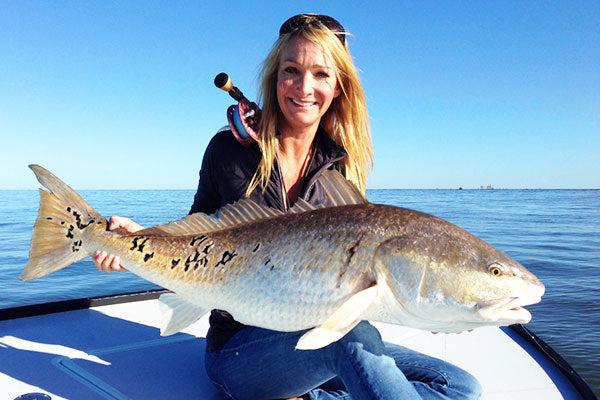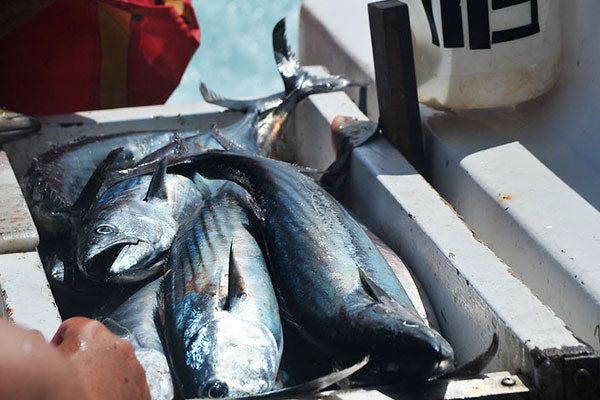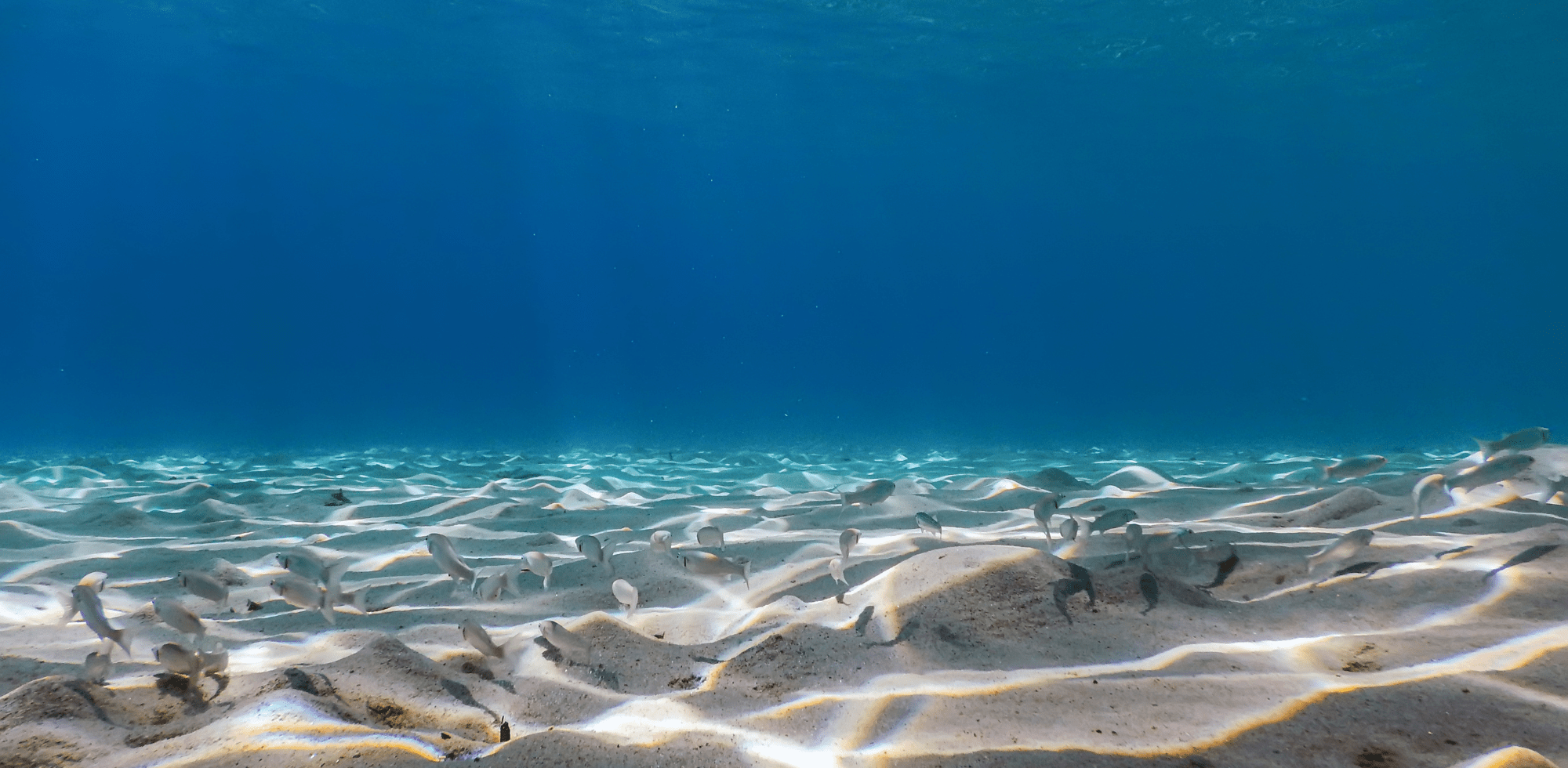
Mahi-Mahi or Dorado has a mighty name with an even stronger meaning; in Indian mythology, it means Earth Goddess. The term Mahi in many eastern languages means fish. That is what we know it as here in the great state of Florida.
Mahi-Mahi may be one of if not the most prized offshore, nearshore pelagic game fish. What is not to love? They are gorgeous, with various colors of blues, greens, and yellows. Mahi fish are tenacious fighters that frequently leap when hooked. They also pull very hard so you can appreciate the sound and smoothness of your fishing reel. With all that said, Mahi is hands down my favorite fish to eat; you can prepare their succulent fillets dozens of various ways.
Let's not waste any more time. In this article, I am going to break down everything that you need to know about Mahi fishing. Rigs, techniques, tips, and even ways to prepare them for the dinner table.
Dorado Fish Facts
Scientific Name - Coryphaena hippurus (common dolphin fish); Coryphaena equiselis (pompano dolphin fish)
Other names - Mahi Mahi, dorado fish, dolphinfish, dolphin
Unique Features - Dorados are brilliant in color, typically bright blue, green, and yellow. They have large dorsal fins that run the full length of their bodies. Large males or bulls have large protruding heads that make them easily distinguishable.
Growth - Extremely fast growers, typically reaching full sexual maturity within 6 to 12 months. The average length is three feet but can grow to six feet and 90lbs.
Life Span - Average life span is 4 to 7 years of age.
Reproduction - Females can lay eggs two to three times per year, and the volume ranges anywhere from 100,000 to1,000,000 eggs each time.
Methods for Catching Mahi Mahi
Mahi prefers blue water, typically found in depths of 400 feet or more, usually near floating sargassum grass or floating debris such as logs, trash, etc. The most popular and efficient method to catch dolphin is to troll lures, rigged ballyhoo, and or pitch artificial lures once a school is spotted. Allow me to break down the best trolling lures and rigs for the speedy Mahi.
Best Dolphin Trolling Lures & Techniques
There are dozens of proven lures that work, but there are a few that stand out among the others. They have a tried and tested track record that produces trophy fish year after year.
- Chugger Head Mahi Lure - Any chugger rubber skirted style bait will work, what you want to be mindful of is the color, we have split tested it dozens of times. Some colors outperform the others every time. For example, in the keys, the rootbeer/pink combination is deadly, pink by itself works very well, and light blues/white are excellent color combos. Rig them with 200lb monofilament and a number six hook. Have a look at the pictures below for reference:

- Flying Fish Tuna Mahi Daisy Chain - Flying fish are at the top of the list when it comes to a preferred food source for dolphin fish. The daisy chain is an excellent choice because it displays a large target and makes some severe commotion and vibration. You can create a Daisy chain with teasers only or add hooks to every bait to spice things up. It's not uncommon for the dolphin to hit the teasers. You can have the rig work in the prop wash or put it back for a ten-second count, and they are equally valid.
- Williamson Ballyhoo Combo - It's no secret that trolling ballyhoo catches fish and big fish at that. The Williamson Ballyhoo Combo is a great imitation bait that performs well. This bait is a large profile bait coming in at 10-1/2 inches long and 15 ounces in weight. One of the significant obstacles that fisherman face when using ballyhoo is washout or spinning of the bait. If not appropriately rigged, the ballyhoo will spin creating and unnatural movement creating far fewer strikes. Using the Williamson bait will prevent many of these headaches.
- Cedar Plug - Does it get any simpler than a Cedar plug? It's a bullet-shaped piece of wood with a hook, but hey, the fish go nuts for them. The lure profile is typically six inches or so and just a few ounces. The lure slices through the water, and the natural wood color produces time and time again.
Best Live Baits for Dolphin
Dolphin, when feeding is usually not very picky; if it moves quickly, they will often strike the lure or baitfish. Pitch a live bait in front of a school of Mahi, and it's almost a sure thing. Here are the baitfish that we recommend:
- Scaled Sardines (Harengula jaguana) - AKA pilchards are very hardy and make for a great bait, not just for Mahi but most species of fish that swim. They grow up to seven inches and spawn offshore, making them familiar to the hungry dolphin. The preferred method of catching scaled sardines is via a cast net, or you can purchase them by the dozen at a bait store.
- Ballyhoo (Hemiramphus brasiliensis) - Ballyhoo are extremely popular offshore baits; you can troll ballyhoo or free line them live. Ballyhoo are easily distinguishable with their elongated lower jaw and characteristics. You can catch them yourself or risk paying top dollar at a bait store. You can also cast net ballyhoo, but a more effective way is by using what they call a Ballyhoop. Deploy a chum block or two, and allow the ballyhoop to sit 10 feet behind the slick. Once large amounts of baitfish show up, scoop them up. Here is a great video demonstration of it in action:
- Flying Fish (Exocoetidae) - Flying fish are a great bait, but there are a little trickier to catch. Flying fish grow up to 18 inches and are known for leaping and long gliding flights. They use this a defense mechanism to elude predator fish such as dolphin, mackerel, sailfish, etc. They have been documented gliding for up to 655 feet, their large pectoral fins allow for this remarkable feat. A common technique is to park a canoe or small boat with light and watch as they flock to the source.
Dolphin Trolling Rod & Reel
When targeting dolphin, you don't need any fancy gear. Believe it or not, most fishermen probably have all that you need. To keep things simple, we recommend a large 8000 size reel spooled with a fifty to a sixty-five-pound braided fishing line on a medium-heavy action rod. A great choice in a spinning reel that is affordable is the Shimano Saragosa; Saragosa reels are bulletproof. They can easily handle most pelagic species that swim the gulf stream or any of the major oceans for that matter. This setup works great for pitching live baits as well. Some anglers prefer conventional, and that is fine; medium-sized lever drag reel, such as the Avet MXL 5.8 MC, is a perfect choice for trolling.

Dolphin Signs - Where to Start Fishing
Okay, so now that you have all the pertinent information needed to catch a mess of dolphin, where do you start applying these techniques once you hit the water? We referenced structure and grass lines early in this article. But there is another major clue that tends to giveaway dolphin location. Have you heard the saying, "Look for the birds"? Looking for the birds is a great indicator and usually suggests that there is bait below. Baitfish have a miserable life; not only do they have to watch what lurks beneath them, but they also have to watch above. Talk about being on edge. Frigate birds are, in my opinion, the best birds to look for, if you see a few frigates, stop and investigate and you are likely to find dolphin close.
Battling the Fish
You hooked up; now, it's essential to make sure your drag is set correctly, not too tight or loose. Make sure the reel has a smooth drag to help prevent the pulling of hooks. Also, be sure to dip your rod tip when the fish leaps, and this will help keep them from throwing the hook and bait. Sometimes it is practical to keep a fish in the water; doing this prevents the school from leaving and makes it possible to land multiple fish.
Gaffing Dolphin
 You are almost there, and you have a beautiful fish at the boat side. Now its time to gaff the fish, Mahi bleed quite a bit when gaffed, so we recommend shooting for the head and then quickly placing the fish in the cooler or fish box. If you bring the fish aboard, get ready for a blood bath and a long night cleaning the boat at the end of the day. Some people like to bleed their Mahi on the vessel; I allow them to bleed out in the cooler.
You are almost there, and you have a beautiful fish at the boat side. Now its time to gaff the fish, Mahi bleed quite a bit when gaffed, so we recommend shooting for the head and then quickly placing the fish in the cooler or fish box. If you bring the fish aboard, get ready for a blood bath and a long night cleaning the boat at the end of the day. Some people like to bleed their Mahi on the vessel; I allow them to bleed out in the cooler.
Mahi Recipe
Now that you have had all the fun on the water, it doesn't stop there. Mahi makes for fantastic table fare, and there are hundreds of great recipes. I am going to share one of my favorites that I think you will genuinely enjoy.

Mahi Tacos
Start to finish: 20 minutes
Oven: 450 degrees
Makes four servings
- Approximately one pound of fresh Mahi fillets
- Two tablespoons butter melted
- 1/4 teaspoon ground cumin
- 1/8 teaspoon garlic powder
- Three tablespoons mayonnaise or salad dressing
- One teaspoon lime fresh lime juice
- 1-1/2 cups shredded cabbage with carrot or shredded cabbage
- Eight corn taco shells or tortilla
- Rinse fish fillets and allow them to soak in water with lime juice for one hour in the refrigerator. Cut fish fillets into 3/4 inch slices. Place fish in a single layer in a greased shallow baking pan mix and combine butter, cumin, and garlic powder. Brush over fish. Bake in a 450-degree oven for 4 to 6 minutes or until fish flakes easily.
- In a medium bowl, stir together mayonnaise and lime juice. Add cabbage; toss to coat. Spoon some of the coleslaw mixtures into each taco shell: add fish slices. Top with mango salsa.
Conclusion
We hope you have enjoyed this article and video content, Mahi is excellent for all skill levels, and they are delicious. Get out there and find some fish. If you would like to share tips or tricks that help you on the water, be sure to comment below. Until next time, we will see you on the water.





